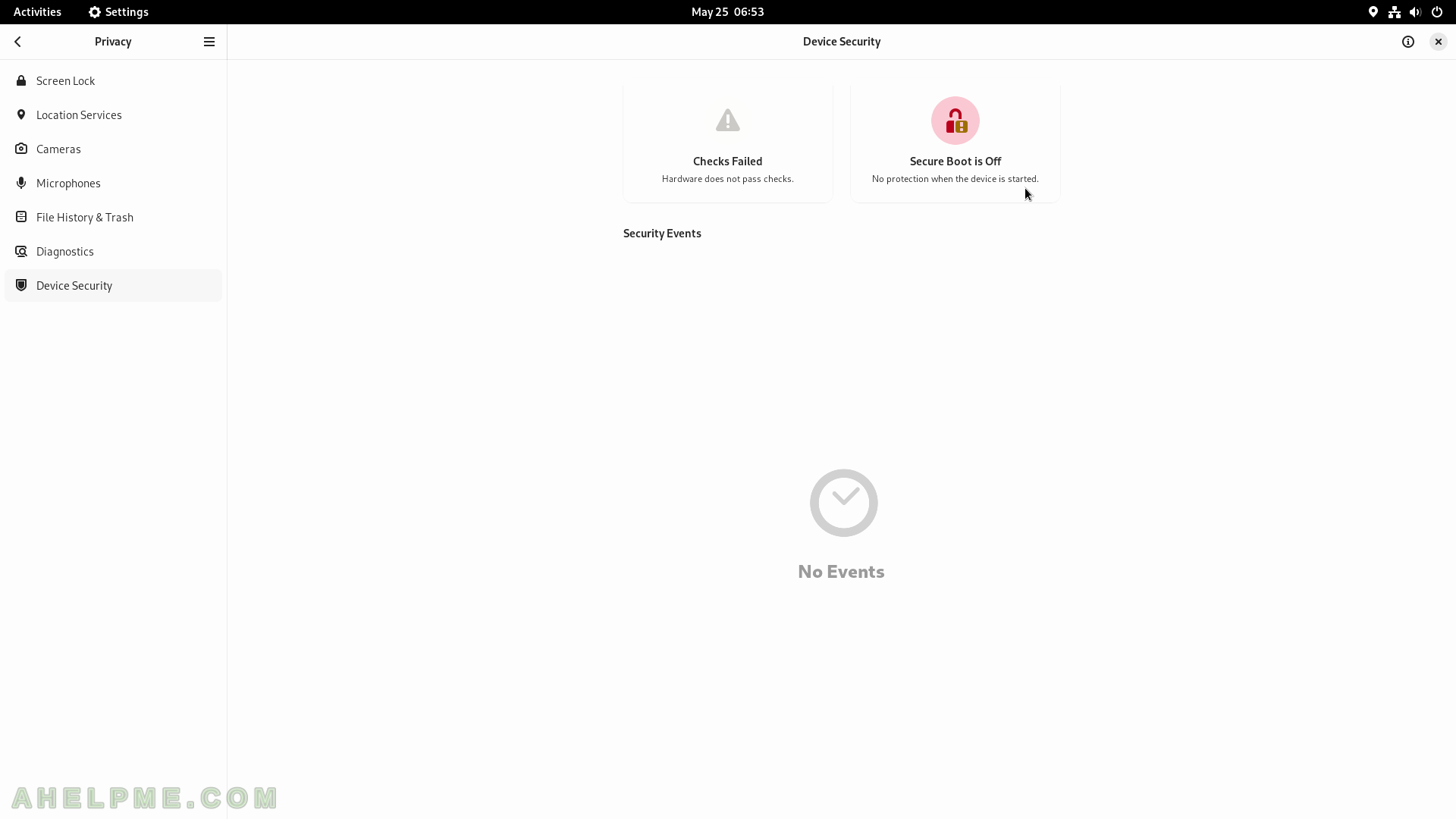SCREENSHOT 161) Which application may have the ability to access the user’s microphone?
By default, none are included.

SCREENSHOT 162) File history service keeps a record of files the user has used for a period of time.
Mainly used for e better searching. In this section, the time to keep the files in the trash could be changed. By default, the files in the trash are kept for 30 days.

SCREENSHOT 163) Problem reporting – whether this service sends reports to Fedora Linux on problems or not.
In general, it is better to send technical reports on errors, that way the future version of Fedora may become more stable and secure.

SCREENSHOT 164) Secure Boot status.

SCREENSHOT 165) More information on Secure Boot.

SCREENSHOT 166) Cloud and email services integrated into Fedora Linux.
Fedora 38 Workstation supports Google, Nextcloud, Microsoft, Microsoft Exchange, Fedora, IMAP and SMTP services, Enterprise Login (Kerberos) and etc.

SCREENSHOT 167) Four types of sharing are available – File Sharing, Remote Desktop, Media Sharing (sharing images and video), and Remote Login.

SCREENSHOT 168) Sound system configuration.
Output and Input Devices, Output Volume, Volume Levels, Alert Sound, and more.

SCREENSHOT 169) Devices, Power Saving – what to do in the different levels.
Power mode – Balanced and Power Saver. More power-saving options – Screen Black and Automatic Suspend. What is the behavior of pressing the power button – by default Suspend. Some devices like mice and keyboards, which supports power reporting may also be configured.

